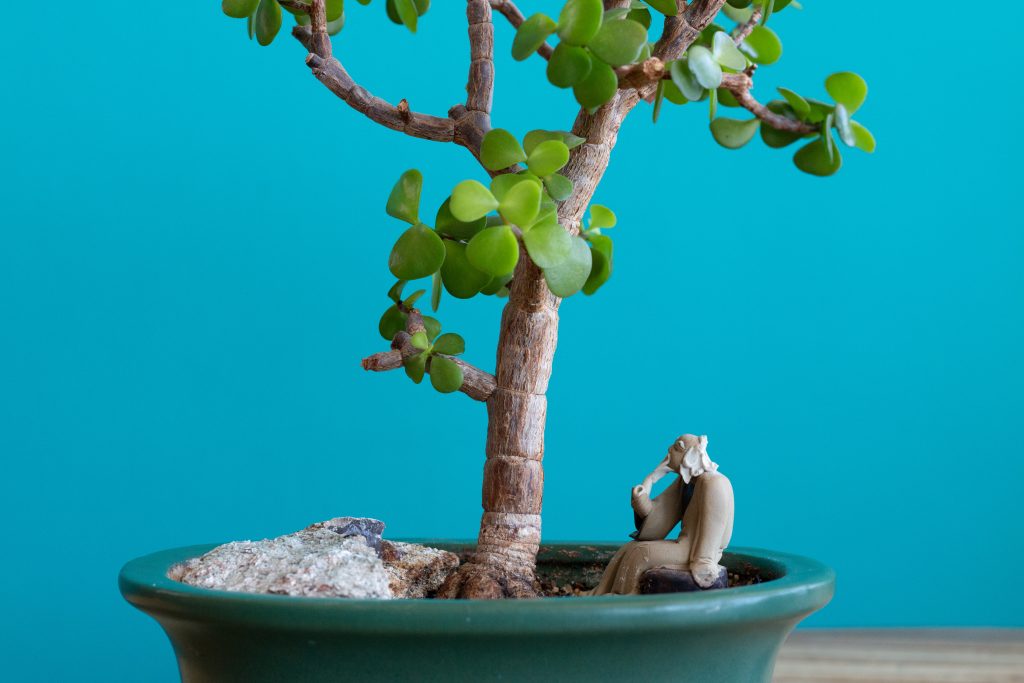
I. Introduction
A. Overview of Jade Plants
Jade plants (Crassula ovata) are popular succulents known for their thick, fleshy leaves and resilience in indoor environments, making them favored choices for home and office decor.
B. Desire to Grow Jade Plants Into Trees
Many plant enthusiasts are intrigued by the idea of transforming their compact jade plants into tree-like specimens, with tall, woody stems and a canopy of lush foliage, adding a unique and striking element to their indoor garden.
C. Importance of Proper Techniques and Care
While growing a jade plant into a tree is achievable with the right techniques and care, it requires patience, attention to detail, and an understanding of the plant’s growth patterns and needs to ensure success.
II. Understanding Jade Plant Growth Patterns
A. Natural Growth Habit
- Succulent Characteristics
Jade plants belong to the succulent family, characterized by their ability to store water in their leaves, stems, or roots, enabling them to thrive in arid conditions.
- Compact Growth Form
In their natural state, jade plants typically grow as compact, bushy shrubs, with multiple stems arising from a central point and dense clusters of leaves covering the branches.
B. Potential for Tree-Like Growth
- Factors Influencing Growth
Various factors, including genetics, environmental conditions, and cultivation practices, can influence the growth of jade plants, potentially leading to the development of a tree-like form under the right circumstances.
- Cultivation Methods for Encouraging Tree Formation
By implementing specific pruning, shaping, and care techniques, growers can encourage the elongation of the main stem and the development of a tree-like structure in their jade plants.
C. Realistic Expectations
While it is possible to coax a jade plant into growing into a tree-like shape, it’s essential to understand that not all plants will respond in the same way, and results may vary depending on individual plant characteristics and environmental factors.
III. Techniques for Growing Jade Plants Into Trees
A. Pruning and Shaping
- Removing Lower Leaves and Branches
To create a tree-like appearance, begin by selectively pruning away lower leaves and branches, focusincrcg on maintaining a single, sturdy stem with minimal lateral growth.
- Training Main Stem for Upright Growth
Encourage upward growth by gently bending and securing the main stem to a support structure, such as a bamboo stake, allowing it to grow tall and straight.
B. Root Pruning and Repotting
- Encouraging Root Development
Periodically root prune your jade plant by gently removing it from its pot and trimming back the outermost roots, stimulating new root growth and promoting overall plant health.
- Transitioning to Larger Containers
As your jade plant grows taller, consider repotting it into a larger container to accommodate its expanding root system and provide stability for the growing tree-like structure.
C. Proper Watering and Sunlight
Ensure your jade plant receives adequate sunlight exposure, placing it near a sunny window or providing supplemental grow lights to promote healthy growth. Water sparingly, allowing the soil to dry out between waterings to prevent root rot.
IV. Maintenance and Care Tips
A. Monitoring Growth Progress
Regularly monitor your jade plant’s growth progress, observing changes in stem height, leaf density, and overall appearance to assess its response to cultivation techniques.
- Regular Observation and Assessment
Take note of any signs of stress or decline, such as wilting leaves or yellowing stems, and adjust care practices accordingly to address potential issues promptly.
- Adjusting Care Practices as Needed
Modify watering, lighting, and fertilization routines as needed to accommodate your jade plant’s changing needs as it transitions into a tree-like form.
B. Pest and Disease Management
Preventatively, inspect your jade plant for signs of pests, such as mealybugs or spider mites, and treat infestations promptly using natural or chemical methods to prevent damage to foliage and stems.
- Preventative Measures
Maintain good hygiene practices by keeping the plant and its surroundings clean and free of debris, reducing the risk of pest infestations and fungal diseases.
- Treatment for Common Issues
If pests or diseases do occur, treat affected areas with insecticidal soap or neem oil, following product instructions carefully to ensure safe and effective control.
C. Patience and Persistence
Growing a jade plant into a tree is a gradual process that requires patience and persistence, as results may take several months or even years to achieve. Stay committed to your plant’s care regimen and enjoy the journey of watching it transform over time.
V. Conclusion
A. Recap of Techniques for Growing Jade Plants Into Trees
By implementing pruning, shaping, and care techniques, growers can encourage their compact jade plants to develop into tree-like specimens, adding a unique and visually appealing element to their indoor garden.
B. Encouragement for Experimentation and Learning
Experiment with different cultivation methods and observe how your jade plant responds, adjusting your approach as needed to achieve the desired tree-like growth.
C. Appreciation for the Beauty and Resilience of Jade Plants
Jade plants are not only beautiful additions to any indoor space but also resilient and adaptable, making them ideal choices for both novice and experienced gardeners seeking to add greenery and elegance to their homes.
